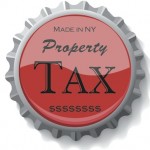

Yesterday’s school budget votes proved once again New York’s school districts aren’t having much difficulty staying under—or overriding—the property tax cap.
The tax cap limits the growth of local tax levies by 2 percent or the rate of inflation, with exclusions for value added to the tax base by new construction, debt service on voter-approved capital borrowing, and a few other district-specific factors. The 675 school districts that submit their budgets to residents in an annual referendum can override the cap if 60 percent of voters consent.
In yesterday’s annual school budget votes, ten of the 18 districts attempting overrides were successful. Voters there approved levy increases as high as 18 percent, as was the case in the Putnam school district in Washington County.
In the eight districts where override attempts fell short, four of the proposals failed to win a simple majority, which would have doomed them even under the state’s pre-tax cap rules. Three other districts also had their budgets rejected even though their plans stayed under their cap. This means most of the districts where budgets were rejected didn’t run into trouble with the property tax cap: they couldn’t convince a simple majority of voters to support them.
The 11 districts that failed to muster the necessary votes yesterday have the option to hold a June re-vote in which they can present a modified or identical proposal. If budgets don’t win approval there, the district’s tax levy will be frozen at its 2018-19 level.
All told, voters signed off on property tax increases totaling $517 million (2.4 percent), in districts that together will educate 7,600 (0.5 percent) fewer students than the year before. Each district’s per-pupil proposed spending and tax increases are broken down in the Empire Center’s annual School Budget Spotlight, which this year showed property taxes levied per pupil would rise 2.8 percent.
That added tax revenue still isn’t enough for cap opponents such as the New York State United Teachers (NYSUT), the statewide teachers union, which has tried to weaken or eliminate the tax cap through legislation and litigation. NYSUT earlier this year claimed the cap is doing “severe harm” to school districts, students and public education—even as the latest figures show New York’s average per-pupil spending has topped $23,000 per year. That puts it 43 percent higher than neighboring Massachusetts, and 89 percent higher than the national average.
Those stratospheric spending levels, combined with declining enrollment in most school districts, were a big part of why New York needed a property tax cap in the first place—and why taxpayers are fortunate Governor Andrew Cuomo succeeded in making it permanent earlier this year.








